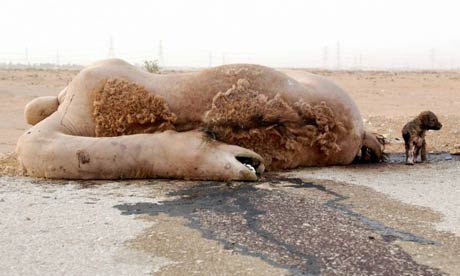DES MOINES, Iowa - Sending a clear message to state officials and presidential candidates, nearly four out of five Iowans (79 percent) -- including 69 percent of Republicans, 86 percent of Democrats and 79 percent of Independents -- think that "Iowa should focus on increased (energy) conservation steps and more fuel efficiency to reduce demand for electricity before it constructs new coal-fired power plants," according to a major new Opinion Research Corporation (ORC) survey commissioned by Iowa Interfaith Power & Light, Iowa Farmers Union and Plains Justice.
Supporters of the "conservation/energy efficiency first" approach include 75 percent of the most likely caucus attendees, including 67 percent who will attend Republican caucuses and 88 percent who will participate in Democratic caucuses. As other states including Kansas and Florida take active steps to roll back plans for coal-fired power plants within their borders, Iowa officials are contemplating the future of two such facilities proposed for construction near Waterloo and Marshalltown.
Another key finding of the ORC survey of 1,005 Iowa residents: Two thirds of likely Iowa caucus goers and 65 percent of all state residents - including 58 percent of Republicans, 71 percent of Democrats and 67 percent of Independents - favor a "one-year-long statewide dialogue in Iowa involving state officials, citizens, unions and utility company regulators to help shape the energy future of Iowa during which current coal-fired power plant plans would be frozen to allow for the most comprehensive discussion." The survey commissioned by Iowa Interfaith Power & Light, the Iowa Farmer's Union and Plains Justice also found that roughly nine out of 10 Iowans (89 percent) - including a nearly identical 88 percent of Republicans, 89 percent of Democrats and 88 percent of Independents -- agree that "the state government of Iowa, as a matter of formal policy, encourages more public and private investment in alternative energy to help create new jobs in the state."
Commenting on behalf of Iowa Interfaith Power & Light about the new survey findings, Bishop Alan Scarfe of the Episcopal Diocese of Iowa said: "With all our eyes focused on the disappointing response of the United States administration to the conversation and conclusions of the Bali meeting, this is an opportunity for our own Governor of Iowa to demonstrate that many Iowans are among the people within the United States who nevertheless understand the deeper implications of the crisis upon us. From the perspective of the religious communities, the recently proposed coal-fired power plants threaten rather than assist our progress towards renewable energy.
The intention of placing them in the demographics of our most at-risk individuals, Marshalltown with its large Latino population, and Waterloo with its greater number of African Americans may have the appearance of providing employment, but at great cost to the health of the participants, as well as the families in the proposed areas. Iowans have shown in this poll that they want time for discussions at the highest level of public representation." Iowa Farmers Union President Chris Petersen said: "In a time of skyrocketing energy costs, Iowa Farmers Union supports legislation that promotes the advancement of renewable energy technology to reduce our dependence on foreign oil and fossil fuels and gives farmers the opportunity to own the means of production." Carrie La Seur, president, Plains Justice, Cedar Rapids, Iowa, and a member of the Iowa Power Fund Board said: "At a January Iowa Utilities Board hearing, an impressive slate of national experts will testify that the proposed Marshalltown coal plant would be a costly mistake. Iowa's renewable energy revolution is the answer for our power needs, not a $1.5 billion investment in 19th Century technology.
We call on the governor to protect Iowa's investment by giving our energy and climate planning processes a chance to work before we permit any new coal plants." Graham Hueber, senior research, Opinion Research Corporation said: "These findings are bad news for people who want to build coal-fired power plants in Iowa. The survey clearly shows that majorities of Democratic and Republican caucus goers - as well as other Iowa adults - would prefer to see an alternative that does not involve putting new coal-fired power plants in the state. We find strong support here for enhanced energy conservation and a major infusion of state and private investment dollars in clean energy. It is also evident that health concerns associated with power plant pollution are seen as a legitimate public health issue, particularly when it comes to children."
KEY SURVEY FINDINGS The ORC survey conducted for Iowa Interfaith Power & Light, the Iowa Farmer's Union and Plains Justice also found the following: -- More than three out of five Iowans (64 percent) - including 73 percent of Democrats, 54 percent of Republicans and 68 percent of Independents agree with the following statement: " ... the best energy alternative is greater efficiency and conservation to eliminate waste, combined with more wind, solar power and other alternative energy ... doing this would ultimately save money in the form of economic benefits to the state, such as cleaner air, healthier children, and fewer public health risks.
Therefore, we should not build additional coal-fired power plants in Iowa." -- More than three in five of Iowans (62 percent) are "concerned about the possible ill health effects - including asthma and heart problems - that could be experienced by you, your family members and others as the result of increased pollution from new coal-fired power plants in Iowa." This figure includes less than half (48 percent) of Republicans, but 73 percent of Democrats.
Three out of four individuals indicating that they will attend a Democratic caucus expressed concern about this issue.
-- Three out of four Iowans -- including 61 percent of Republicans, 86 percent of Democrats, and 75 percent of Independents -- are less likely to support new coal-fired power plants when told: "Coal-fired power plants are the primary source of carbon dioxide pollution - a known contributor to global warming." This view is shared by 72 percent of those most likely to attend a caucus, including 60 percent of those attending a Republican caucus and 85 percent of those attending a Democratic caucus.
-- More than three out of four Iowans (77 percent) -- including 68 percent of Republicans, 84 percent of Democrats and 79 percent of Independents -- are less likely to support new coal-fired power plants in the state when told: "Much of the power generated at the new coal-fired plants in Iowa would be sold to out of state customers but Iowa would get all or nearly all of the resulting pollution."
-- More than three out of four Iowans (77 percent) -- including 69 percent of Republicans, 85 percent of Democrats and 74 percent of Independents -- are less likely to support new coal-fired power plants when told: "Hundreds of thousands of children live in Iowa within a 30-mile-radius of a coal-fired power plant." This view is shared by 75 percent of the most likely caucus attendees, including 68 percent of Republican attendees and 84 percent of Democratic attendees.
-- Fewer than one in three Iowans (31 percent) -- including only 42 percent of Republicans, 23 percent of Democrats and 28 percent of Independents -- see "access to affordable electricity" as a sufficient justification for building new coal fired power plants in the state.
-- Four out five Iowans -- including 71 percent of Republicans, 87 percent of Democrats, and 86 percent of Independents - think that older, "grandfathered" power plants should be required to "install the advanced pollution control devices required for new electricity-generating facilities before new coal-fired power plants are built" in the state. This view is shared by 79 percent of the most likely caucus attendees, including 67 percent of Republican attendees and 88 percent of Democratic attendees.
-- Only about two out of five Iowans (42 percent) say they favor "building new coal-fired power plants in the state," compared to a total of 58 percent who either oppose new plants or have not yet made up their mind. Only about a third (34 percent) of Democrats favor new plants, compared with 43 percent who oppose them and 23 percent who have not decided. Over half of Republicans (55 percent) support new plants, with 27 percent opposed and 18 percent undecided. Fewer than two in four Independents (38 percent) support new coal-fired power plants, compared to 33 percent who oppose them and 28 percent who are undecided. -- Fewer than two out of five Iowans (37 percent) are aware of "pending plans for coal-fired power plants in Iowa near Waterloo and Marshalltown." Awareness varies widely by region with 64 percent of those in the Cedar Rapids area (which includes Waterloo) knowing of such plan, 34 percent awareness in Des Moines (closer to Marshalltown) and only 22 percent in the rest of the state. -- A third of respondents said that they will "definitely attend" or are "extremely likely" to attend a caucus, including 31 percent of Republicans and 40 percent of Democrats.
-- 39 percent of the respondents were Republican/Independents leaning Republican, 47 percent were Democrats/Independents leaning Democratic, 37 percent were Independents, and 2 percent were associated with other parties.
-- About nine out of 10 respondents (89 percent) said they are registered to vote. For full survey findings, go http://plainsjustice.org/filings-for-marshalltown-iowa-coal-plant-proposal/ on the Web.
METHODOLOGY
Survey results are based on telephone interviews conducted among a representative sample of 1,005 adults aged 18 and over living in private households in Iowa. Interviewing was completed by Opinion Research Corporation during the period of December 7-11, 2007. The margin of error is plus or minus 3 percentage points for the complete sample of Iowa adults. Smaller sub-groups will have larger error margins.
ABOUT THE GROUPS Iowa Interfaith Power & Light (http://www.ncrlc.com/IICEC.html) is part of a national network dedicated to protecting God's sacred creation and safeguarding public health. Iowa Interfaith Power & Light has worked with more than 150 faith communities in Iowa to reduce global warming pollution while empowering those most impacted by higher energy costs, by increasing investment in energy efficiency and by creating new revenue streams through clean energy. The Iowa Farmers Union (http://www.iafu.org/) works to sustain and strengthen the family farm agricultural system in the United States through education, legislation and cooperation. With headquarters in Cedar Rapids, Iowa, Plains Justice (http://plainsjustice.org/) is a public interest environmental law center working for environmental justice and sustainable communities in the Northern Plains region of the U.S., including eastern Montana, North Dakota, South Dakota, Nebraska and Iowa. The Plains Justice docket includes Clean Air Act, Clean Water Act, Resource Conservation and Recovery Act and energy policy work.
















